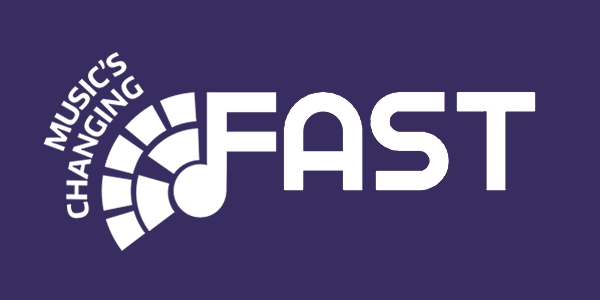
Author Archives: admin

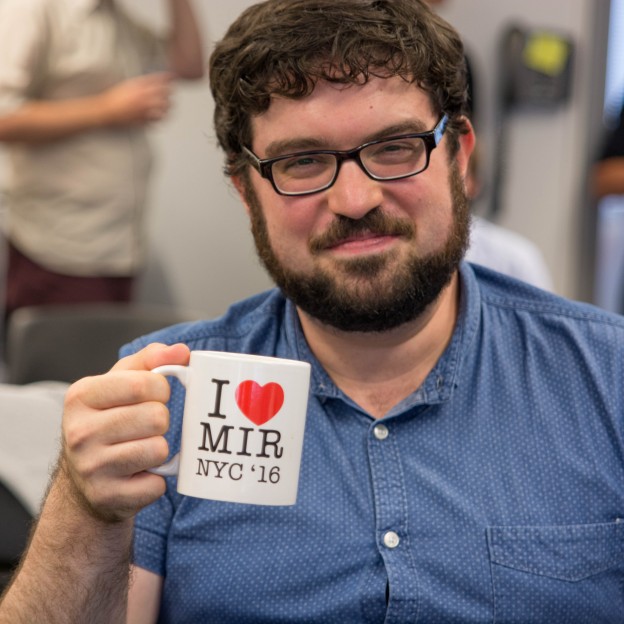
Photo 74: Oxford workshop 12 Sept 2016
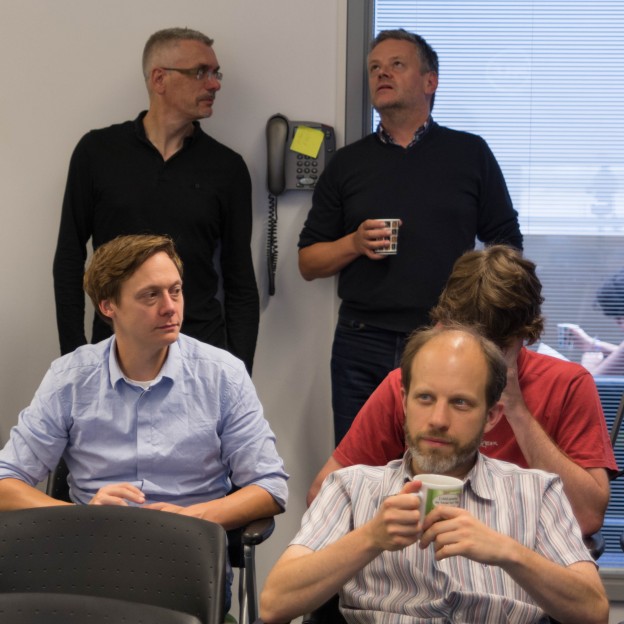
Photo 73: Oxford workshop 12 Sept 2016
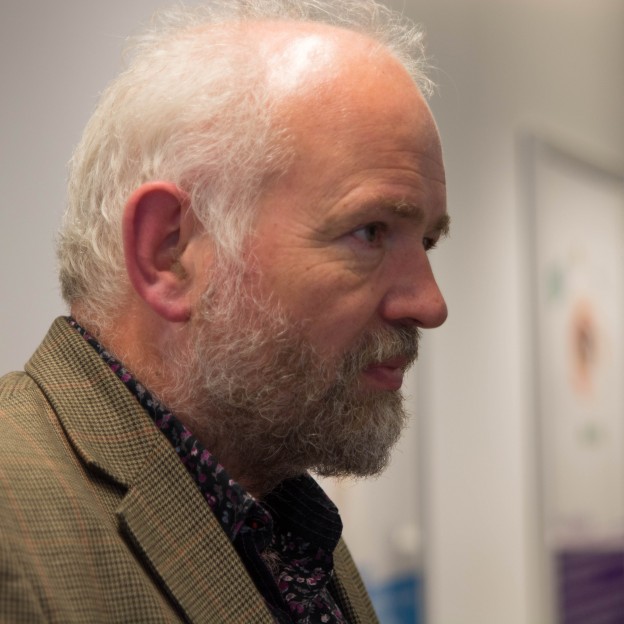
Photo 72: Oxford workshop 12 Sept 2016
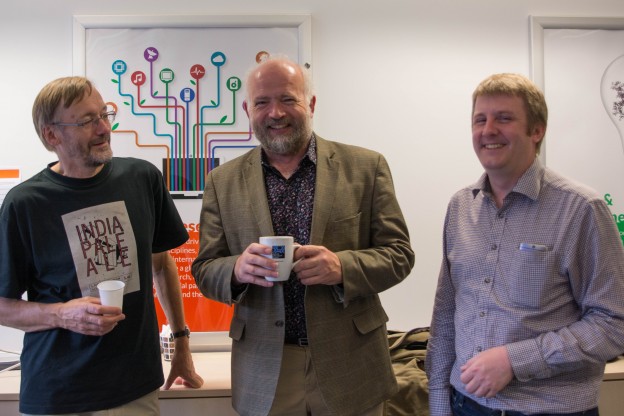
Photo 71: Oxford workshop 12 Sept 2016
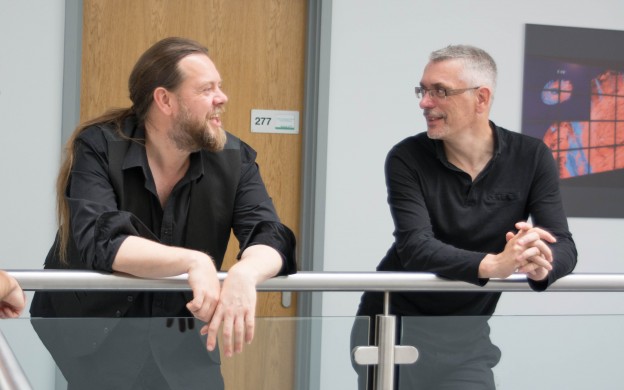
Photo 70: Oxford workshop 12 Sept 2016
To blockchain, or not to blockchain?
by Panos Kudumakis, Centre for Digital Music, Queen Mary University of London
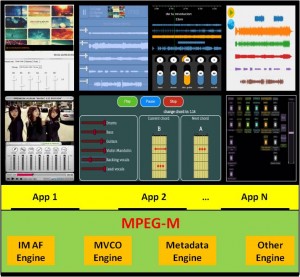 The US Digital Millennium Copyright Act & the EU Electronic Commerce Directive aimed to revive the music industry; however, they are currently under revision, with respect to: a) what changes are needed to guarantee fair and increased revenues returned to artists and rights holders; and, b) how these changes would result in improved standards for multi-territory licensing, timely payments, and overall more transparency.
The US Digital Millennium Copyright Act & the EU Electronic Commerce Directive aimed to revive the music industry; however, they are currently under revision, with respect to: a) what changes are needed to guarantee fair and increased revenues returned to artists and rights holders; and, b) how these changes would result in improved standards for multi-territory licensing, timely payments, and overall more transparency.
In meantime, several key artists and musicians have turned their hopes for resolving these issues to technology and in particular, towards blockchain. Blockchain emerged in 2008 as the technology that underpins bitcoin. It operates as a shared ledger, which continuously records transactions or information. Its database structure, where there is a timestamp on each entry and information linking it to previous blocks, makes it not only transparent, but exceptionally difficult to tamper with.
Initiatives investigating blockchain have been launched on both sides of the Atlantic. In the USA, Open Music Initiative (OMI) has been launched by Berklee Institute for Creative Entrepreneurship, harnessing the MIT Media Lab’s expertise in decentralized platforms, whose mission is: to promote and advance the development of open source standards and innovation related to music, and to help assure proper compensation for all creators, performers and rights holders of music. It is worth to mention that OMI focus, wisely, set on a) new works rather than the vast legacy music catalogue, with the aim, that the same principles can be applied to the legacy music, retrospectively; and, b) on achieving interoperability among infrastructures, databases and systems so to be accessed, shared and exchanged by all stakeholders.
In Europe, one of blockchain’s evangelists is the Grammy Award-winning UK singer, songwriter and producer Imogen Heap. She has launched a blockchain project, Mycelia. Although still in its foundational stages, she intends it to be an entire eco-system that utilises blockchain as a way to enact a complete shake up in the music industry. Mycelia’s mission is to: a) empower a fair, sustainable and vibrant music industry ecosystem involving all online music interaction services; b) unlock the huge potential for creators and their music related metadata so an entirely new commercial marketplace may flourish; c) ensure all involved are paid and acknowledged fully; d) set commercial, ethical and technical standards in order to exponentially increase innovation for the music services of the future; and, e) connect the dots with all those involved in this shift from our current outdated music industry models, exploring new technological solutions to enliven and positively impact the music ecosystem.
However, blockchain is not quite ready yet and that is its dirty secret. Much as the enthusiasm is growing, it is likely to be several years before we see blockchain rolled out in a wide-scale, mainstream capacity.
In this section a brief overview of the components needed for a fair trade music ecosystem, beyond blockchain, are described. MixRights: Fair Trade Music Ecosystem recently presented at Interactive Music Hack-Fest in London, 11 June 2016, Sonar+D in Barcelona, 16-18 June 2016 and Mycelia Weekend in London, 8-10 July 2016. It features the following components and it is a mature test-bed for blockchain integration and experimentation.
- Identification is a fundamental component of any music trade system. A song identifier can be random so long as it can also be discovered by alternate IDs such as ISRC and/or ISWC. MPEG-21 Digital Item Identification provides a simple and extensible way for facilitating alternate IDs through the elements: a) Identifier; and, b) RelatedIdentifier;
- IM AF/ISO BMFF/STEMS/HTML5 editor/player for collaborative music creation & remixing, karaoke & chords, tagging & sharing in social nets & counting …. music citations!;
- MVCO Extensions on Time-Segments and Multi-Track Audio has reached the stage of PDAM at 115th MPEG Meeting, Geneva (CH), 30 May – 3 June 2016. It facilitates transparent IP rights management even when content reuse is involved with respect to permissions, obligations and prohibitions. It enables music navigation based on IP rights and … co-author graphs!;
- DASH streaming of IM AF is further enabling radio producers and DJs to schedule playlists for streaming to their radio stations and clubs, respectively, and perform live mixing for their audience. Thanks to MVCO artists could be paid straightaway, while they could even be notified when their tracks are scheduled for streaming, thus, enabling artists/fans interaction;
- Monetisation via Express Play and/or blockchain.
For further info please visit MPEG Developments.
Generating webpages for digital objects based on linked data
by Matthew Wilcoxson, Oxford e-Research Centre, University of Oxford
We are exploring the idea of a Performance Digital Music Object (DMO) – an object of this nature would contain information associated with a particular performance or group of performances taking place in a single event. As an example, it could be used as a souvenir gift which you may receive after a live concert containing (or linking to) the recording, analysis, video and social media reactions of the event.
An initial aim of this work is to have a DMO which only contains a list of linked datasources not the data itself. When accessed it would request the data and generate a human readable view of this data. Initial efforts centre around automatically creating webpages based on linked data and a minimal specification of how that data would be best displayed.
Early prototypes of this webpage generation use a SPARQL server. Data is requested by queries which return the main entity’s literal objects, its linked entities and other entities which are directly linked to it. By utilising the additional information within the connected entities we can create a practical enhanced view of the main entity. For example, when viewing an entity representing a music group we can enhance it with the group’s events, members, etc.
To represent this data in an engaging way suitable view templates are selected for different parts of the whole view by matching a combination of the main entity’s type and the predicate and type (or type hierarchies) of the linked entities. By utilising entity type hierarchies we should be able to avoid specifying all views for all entities as parent entity views should be compatible with child entities. For example, a view template that was designed for an Agent (e.g. https://www.w3.org/ns/prov#Agent) could also be used for a Person (e.g. http://xmlns.com/foaf/0.1/Person). However, in this case unique predicates of children entities would not be shown.
A further aim is to receive and display real-time updates, for example reading automatic music transcriptions (see https://www.semanticaudio.ac.uk/blog/can-a-computer-tell-me-what-notes-i-play-music-transcription-in-the-studio/) generated during an ongoing live performance. This work is still to be done but it is expected to work in a similar way to how static data is retrieved and displayed but this system will poll a SPARQL endpoint for updates. If some processing of the raw data is needed this is assumed to have already happened before passing through the SPARQL endpoint.
Our datasource currently comes from Annalist which is a generic data store created by Graham Klyne and produces JSON-LD (See https://www.semanticaudio.ac.uk/blog/linked-data-descriptions-of-live-performances/ ) . The data is indexed into our SPARQL server (currently Apache Jena’s Fuseki) and queried from there via a NodeJS server. Final versions should be generic enough to use any SPARQL endpoint.
With future research it should be possible to create a new view template ontology and separate view template specifications meaning specifications could be located anywhere on the internet and requested and reused in the same way one might request data from any datasource.
FAST in conversation with Enrique Perez-Gonzalez, Solid State Logic
Solid State Logic is a high-end manufacturer of audio products for the broadcast, music and live market. They manufacture anything from modular bus compressors for the music studio industry to huge audio over IP networked mixing systems for large scale broadcast facilities.
FAST interviewed Enrique Perez-Gonzalez, one of FAST project’s participants, in August 2016.
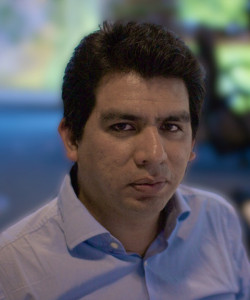
Enrique Perez-Gonzalez, Solid State Logic
1. Could you please introduce yourself?
My name is Enrique Perez-Gonzalez and I am the Chief Technology Officer for Solid State Logic. Music and audio have been my passion since I was a little kid. In my current role at SSL, I am in charge of all the R&D and Engineering teams. I am also in charge of the Technology vision and strategy which underpins all research and development for SSL. I have a PHD from Centre for Digital Music, QMUL, and have worked in the audio/music industry since I was very young. I believe the mixture of a solid industrial and academic background can be of use to the FAST project. I hope SSL can help bridge the gap between industry and academia.
2. What’s your role within the FAST project?
My role is to advise and guide the project, so that the resulting research is useful and deployable to the audio, music and entertainment industry. The type of technology researched in the project has direct application in the creative industry and has the potential of having very high impact in the way people interact with music and content. I am keen to make sure that the FAST research conducted has solid industrial application and becomes deployable in real life applications. As a representative of SSL, I am happy to offer guidance on current trends in the industry and give market advice. SSL can also provide the FAST team with access to state of the art recording, broadcasting and live facilities and equipment. SSL can also provide access to experts in the fields of music recording, broadcasting and live mixing.
3. Which would you say are the most exciting areas of research in music currently?
Research on workflow is something SSL is always interested (how why people do things and understanding why they do it in order to offer improved workflows). Other areas are also interesting: object based composition/mixing, multi-format delivery of content, remote production, spatial audio, audio over IP.
4. What, in your opinion, makes this research project different to other research projects in the same discipline?
The quality and expertise of the research team is impressive in its own right. The fact that this is a true multidisciplinary research that brings a holistic approach to music research makes this project unique. I find very interesting how the FAST project approaches the study of music from its creation all the way to the consumption of it. The research currently done by the FAST team does not only operate on an academic angle, it also brings engendering and scientific disciplines with the help social research experts, musicians and industry experts. I believe the multidisciplinary approach currently being used in the FAST project will be able to shed some light on the complexities of music creation and lead to a better understanding of the interdependencies of the artistic, technological and creative tension which results in the content creation of music.
5. What are the research questions you find most inspiring within your field of work?
I find two areas of research of the FAST project particularly interesting from the point of view of my field of work. The first one has to do with the understanding of workflow and how music is created, produced, delivered and consumed. I think that in order to develop unique, efficient and useful tools for music we need to understand why musicians, composers and content creation creative people do things the way they do. This will lead to a better understanding of how and why musicians, content creators and consumers interact with music. The second research question I find particularly fascinating is the idea of solving and understating the challenges in the current distribution mechanisms and user consumption of music. Where does currently music content need to be produced over and over for multiple formats and media in order to satisfy the varied and sophisticated consumption needs of music users? Also, the current need to distribute music through social media makes it harder to produce, licence and monetise. It is the true understanding of this workflow that I find fascinating. In my view it is the study of this start to end workflow that will lead to the development of better and more useful tools that will push the boundaries of the creative and music industry. In that sense, I find the FAST project research on semantic technologies one of the strongest contenders in solving the distribution and licensing challenges that the current music and entertainment industry currently suffers from. The concept of music objects and the use of sematic web tools are promising technologies that could be used towards a more efficient workflow of music.
6. What, in your opinion, is the value of the connections established between the project research and the industry?
In my opinion this connection is invaluable. Where most academic research fails is in delivering results that have a direct application in industry and have a direct connection with real life problems. Currently, significant areas of the music/audio industry are in a state where most of the resources are deployed to the development of products and little is left to long-term research. Industry desperately needs to get answers to deeper research questions, such as, why music creators and consumers do things the way they do. This will benefit the industry directly because manufacturers such as us need this information in order to create better tools and workflows for our costumers. I am convinced that the links that FAST has with Industry will have a direct impact on the future developments of tools and products which we will see in industry use in the next few years to come.
7. What can academic research in music bring to society?
Society needs music as a form of expression and entertainment. Music is a force of social change and can enhances positive development models for society. Academic research is capable of improving accessibility to music. How society interact with music from the start of the creative process all the way to the consumption of it is a invaluable contribution that academic research will bring to society. In particular the FAST project will deliver better understanding of the music creation process, this will enable the development of better and easer to use tools that will have a direct impact for music composers of all levels and will improve general access to music creation for society in general. In my mind it is academic research which will produce rigorous enough results which will allow industry to take inform decisions which will influence the developments of the next generation of tools for music creation.
9. Why did you choose this area of field of industry?
For me, researching and developing technology for the audio industry has the perfect balance of creativity, science and engineering. The tension generated between the creative forces and the limitations of technology is what challenges me and keeps me motivated to develop the best possible tools and products for musician and audio content creators.
10. What are you working on at the moment?
We are always working on new ways to improve and enhance the ways the way people work. Currently, we are developing a new generation of audio over IP large scale mixing consoles. The System has been design to deal with multiple formats for simultaneous delivery of material over multiple formats. The new systems we are developing are metadata ready, so they can deal with object based workflows. We are also working on a series of products for the recording music industry that aim to improve user workflow while enabling then to use them the latest available technology with ease.
11. Which is the area of your practice you enjoy the most?
The design of new products is always rewarding. It’s usually signifies the cohesion of several years of research and development which combines state of the art electronics and signal processing research together with clever workflow streamlining for enhancing the way musicians and audio operators work and perform. Developing technology that is a game changer for the creative and entertainment industries is what inspires me most. I always find it amazing when I see that creative individuals (musicians, content creators, mixing engineers…) have the ability to take new technologies and workflows and push it to extreme.
Professor Mark Sandler elected fellow of the Royal Academy of Engineering
Professor Mark Sandler is one of 50 of the UK’s engineers to be welcomed as new Fellows on the day to mark the Academy’s 40th annual general meeting. There are only 1,500 Fellows in total, and Fellowship of the Royal Academy of Engineering is considered to be one of the greatest national achievement that an engineer can receive.
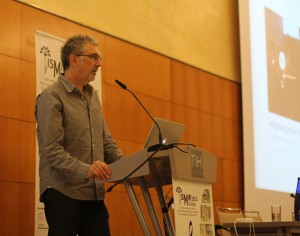 The honour was awarded in recognition for Professor Sandler’s research contributions in digital music, and in particular computer generated musical analysis.
The honour was awarded in recognition for Professor Sandler’s research contributions in digital music, and in particular computer generated musical analysis.
Commenting on his election, Professor Sandler said: “I am truly honoured to be elected a Fellow of the Royal Academy of Engineering. I think I will be one of a small minority of Fellows interested in the Creative Industries, and so I hope to be able to raise that sector’s profile within the Academy.”
Professor Sandler has been leading the £5 million EPSRC-funded project “Fusing Audio and Semantic Technologies for Intelligent Music Production and Consumption” (FAST IMPACt) since June 2014 with UK partners from Nottingham University (Professor Steve Benford, Mixed Reality Lab) and University of Oxford (David de Roure, Oxford e-Research Centre). For a full list of FAST partners, see our Participant page here.
Read full QMUL press release:
http://www.qmul.ac.uk/media/news/items/se/181405.html
Read full The Royal Academy of Engineering press release:
http://www.raeng.org.uk/news/news-releases/2016/september/academy-elects-top-engineers-as-fellows-at-its-40t
